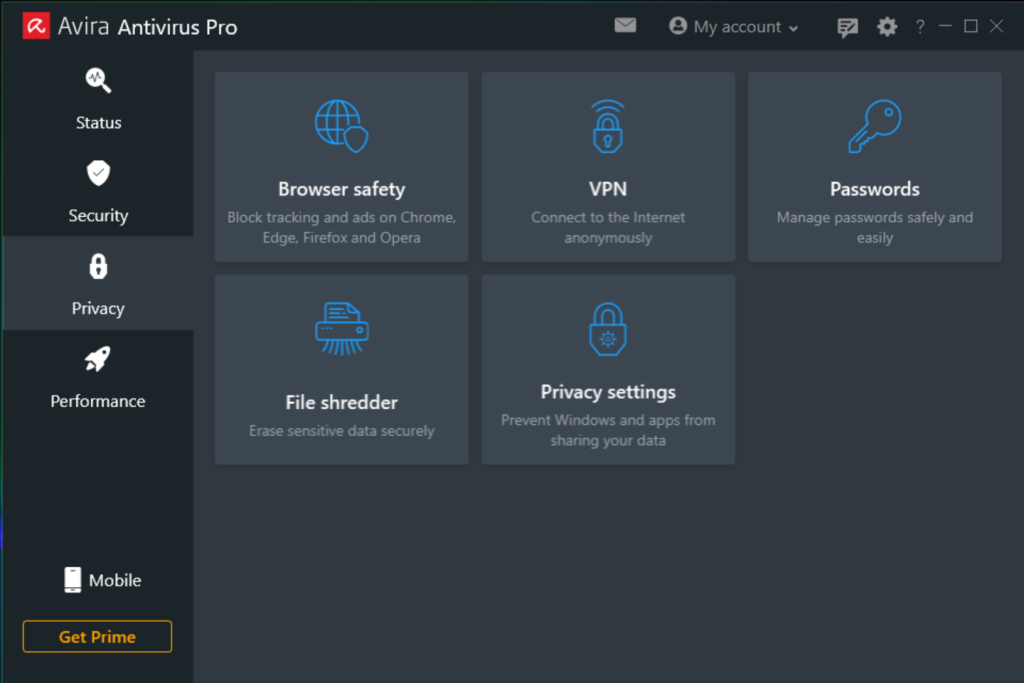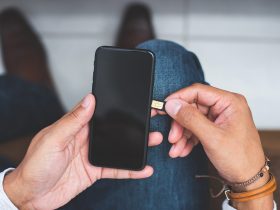We’re always hearing in the press about celebrities being cyberstalked. But now they’re not the only ones. According to various studies, like the Norton Cyber Safety Insights Report, around 12% of people will be stalked at least once in their lifetime — and an even sadder statistic is that it’s mostly (over 80%) women who are the victims.
The term “stalking” originates from the world of hunting, and means something like to “creep up” or “spy on”. However, we tend to associate this term with the repeated and unwanted monitoring, spying on, harassing, threatening, or pursuing of an individual.
The internet has made it a breeze to get information on someone and contact them. And, as you’ve already guessed, stalking is now also widespread on digital platforms.
Read on to learn what cyberstalking is, the form an attack might take, and how you can protect yourself from becoming a victim.
What is cyberstalking?
Cyberstalking is the digital variant of stalking, where the attackers (stalkers) stalk their victims using digital tools to follow them, monitor them, and threaten them. A stalker could be anyone: From an ex-partner, friends, colleague, or neighbor to a complete stranger.
A cyberstalker can easily obtain the desired information about their victim using a wide variety of digital platforms and tools — all while remaining almost completely anonymous. In addition to the information a victim publishes themselves on social networks, these cyberstalkers often use stalkerware — programs on the victim’s smartphone that can be used to gather information.
It’s safe to say that the number of unreported cyberstalking cases is incredibly high, so the statistics we mentioned at the start don’t paint the full picture. But one thing’s for sure: Cyberstalking will continue to increase in the coming years and in many different forms.
The difference between cyberbullying and cyberstalking
The term cyberbullying covers many forms of defamation, harassment, and coercion of other people, primarily via social media platforms (such as Facebook or TikTok) or messenger services (like WhatsApp or Telegram). It involves the posting of aggressive or offensive texts or compromising photos or videos to attack or ridicule the victim.
Youngsters are particularly affected by this. Most of the perpetrators, who are mainly youngsters themselves, have no clue that it’s an offense to cyberbully — and they may not even be aware of the massive and, above all, lasting damage cyberbullying can inflict. That’s because videos and photos published on YouTube or Facebook quickly reach a huge audience — and continue to circulate on the internet for years after posting.
What forms does cyberstalking take?
Cyberstalking can take many different forms, and it’s not always easy to differentiate between cyberstalking and cyberbullying.
For example, cyberstalkers may aim to stalk their victims to cause them a huge amount of harm by spreading lies, rumors, or defaming them on websites, in discussion forums, blogs, newsgroups, or by email.
Just imagine how you’d feel if a stalker emailed friends, acquaintances, or work colleagues in your name, made false accusations, harassed them, or even threatened them — all without you even having faintest idea.
The impact can be even more devastating if a cyberstalker makes sensitive and very private information about the victim public. After all, who’d want details about their personal finances or even intimate photos to circulate on websites, in newsgroups, forums, or on file-sharing platforms. And nobody wants to be told by someone else that manipulated photos of ourselves are circulating on these various portals.
Identity theft is a particularly serious form of cyberstalking
One particularly serious form of cyberstalking is where a cyberstalker registers on internet dating sites or online marketplaces in your name and using your pictures.
The method of ordering goods in the victim’s name is quite well known. The goods then go to the victims or even completely uninvolved third parties, with the person being stalked left to pick up the bill. Usually, it’s not just a single order we’re talking about here; rather, the value of orders placed using a fake ID can run into many thousands. This can cause significant financial harm to the victims of this form of cyberstalking because it’s not always easy for them to prove that they didn’t order the goods themselves.
Using cyberstalking to commit crimes
It can also be alarming if cyberstalking is used to commit crimes. Nowadays, you even hear cases of cybercriminals harming their victims by threatening to go on the rampage or assassinate them.
Top tips to protect yourself against cyberstalking
Given that the known cases of cyberstalking are on the rise, it’s pretty clear that theoretically it can happen to anyone, any time.
That’s because with the right amount of criminal intent, even those who are technically less experienced can quickly get their hands on the necessary information about their potential victim. Once they’ve gathered this information, cybercreeps can use this data to launch a cyberstalking attack, which, in addition to financial and personal impacts, can also cause considerable psychological stress.
The key thing in this regard is to prevent this from happening in the first place — and fortunately, there are a number of steps you can take right now to protect yourself from potential cyberstalking.
Using a VPN when connecting to public Wi-Fi hotspots can help protect you from cyberstalking
At the airport, on the train, or in a café: Public Wi-Fi hotspots are great when you’re on the go and still want to access the internet, check emails, or do some online banking.
The catch: These hotspots tend to have fairly lax security settings. This gives cyberstalkers the perfect platform to get at your personal information and use it to launch a cyberstalking attack on you.
If you also want to surf more privately when on hotspots and, above all, more safely — away from the prying eyes of cyberstalkers — you should use a virtual private network — or VPN for short. When connecting via a VPN, your actual IP address is not shown. Instead, search engines and website operators see the VPN’s IP address. You can choose a VPN based on the operating system you’re using. For example, if you are a Windows user, you might want to use the VPN for Windows. If you are a Mac user, go for the VPN for Mac.
Avira Phantom VPN can help you protect your online activities against cyberstalking attacks and surf privately.

Top tip: Avira Phantom VPN is included with Avira Antivirus Pro and Avira Prime, helping you improve the protection of your online privacy as well as your devices’ security and performance.

Antivirus: A must-have — and not just to help protect yourself against cyberstalking
You’ve probably heard it all before when we say we recommend you install an antivirus program on your digital devices — including on your smartphone or tablet — to protect against cyberattacks and prevent cyberstalking.
An antivirus app that comes bundled with your device’s operating system does of course already offer some protection against many cyberthreats. However, with a tried-and-tested antivirus solution, you enjoy the benefit of a solution that’s constantly detecting new threat patterns and is designed to fix security flaws.
Even the free edition of the proven solution Avira Antivirus can increase your protection from a wide range of cyberthreats — including against stalkerware that can be used to launch cyberstalking attacks.
And it comes with added benefits: Avira Antivirus is a lightweight antivirus program that won’t sap your device’s resources — plus it factors in performance and privacy when scanning your system.
Minimize the risk of cyberstalking with a password manager
Whether banks, online retailers, or email providers: Two-factor authentication (2FA) is becoming an increasingly common way to boost the protection of your personal information.
But what good are the providers’ best security measures if you don’t play at least a small part in improving the protection of your online privacy? Many users still only use a few different passwords for all their accounts. The upshot: This makes it easy for cyberstalkers. Once they have a password, it’s easier for them to access other accounts with an identical or very similar password.
If you use a password manager, you can shut this open door to your privacy. With a good password manager, you get a more secure way to manage your various online accounts and all those passwords no matter which device you use.
Use a solution like Avira Password Manager to put a stop to cyberstalkers sniffing out your information — and in doing so raise your defenses against a potential cyberstalking attack. With this application, you can create strong passwords for all your accounts. Plus, Avira Password Manager comes with a smartphone authentication feature to validate your log ins on websites, allowing you to further increase your security and online privacy.

What can you do if you’re a victim of cyberstalking?
Online creeps want to gain power and control over their victims out of revenge, or because they feel abandoned, spurned, or rejected. Such motivations can turn into hate and downright psychological terror, and also be extremely traumatic.
Governments around the world are taking action, including in Germany where in 2007 stalking was added as an offense in its own right to the German Criminal Code and included in the code of criminal procedure. Under certain conditions, the perpetrator can be put on remand or even placed in detention if there is a risk of them repeating the offense. Cyberstalking is also considered an offense, punishable with the same force of the law.
If you’re the victim of cyberstalking, you should act now! Don’t wait for the threat to go away on its own and for you to stop being harassed or threatened.
- Note down and document everything the cyberstalker sends, says, or does to you so you have all the facts and evidence.
- Block your attacker.
- Change all your passwords and get a new email account.
- Share your new email address with your family members, confidants, and, if necessary, authorities and employers with whom you are in contact via your email address.
- Get a new SIM card for your smartphone and tablet so that the cyberstalker can no longer reach you on your previous cell phone number(s) — and of course inform your trusted contacts about this as well.
- Go to the police and file a report. It’s been proven time and again that rapid and rigorous intervention by the police is effective and that the harassment can stop once a report has been filed.
- Contact an organization that helps victims. And don’t be afraid to seek professional help if you’re finding it traumatic.














